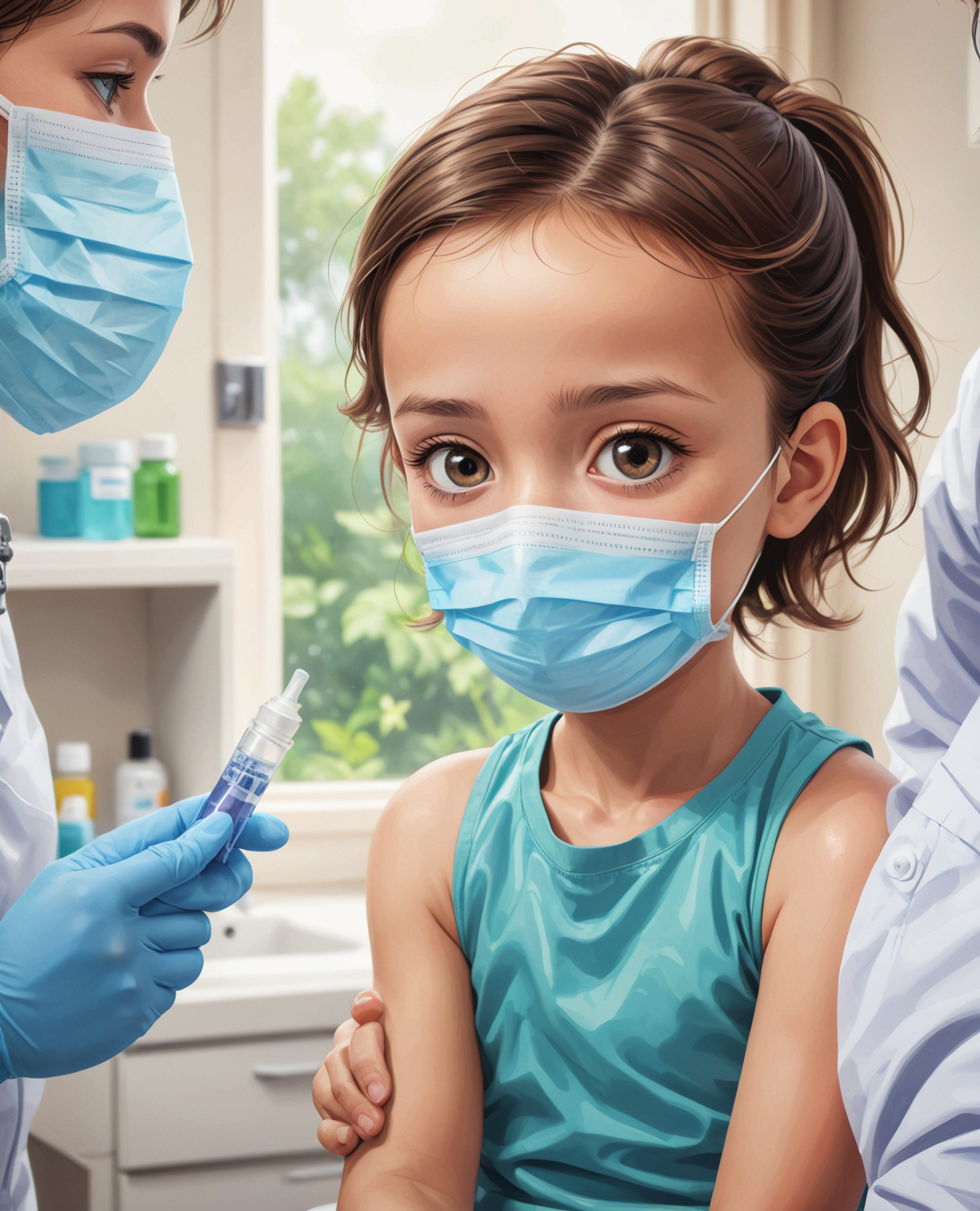Global childhood immunization coverage remained stagnant in 2023, with 2.7 million more children either unvaccinated or under-vaccinated compared to pre-pandemic levels in 2019, according to data released today by the World Health Organization (WHO) and UNICEF.
The latest WHO and UNICEF estimates of national immunization coverage (WUENIC)—the world’s most comprehensive dataset on immunization trends for 14 diseases—highlight the urgent need for catch-up, recovery, and system-strengthening efforts.
“The latest trends show that many countries continue to miss far too many children,” said UNICEF Executive Director Catherine Russell. “Closing the immunization gap requires a global effort. Governments, partners, and local leaders must invest in primary healthcare and community workers to ensure every child gets vaccinated and overall healthcare is strengthened.”
According to the findings, the percentage of children receiving three doses of the vaccine against diphtheria, tetanus, and pertussis (DTP)—a key indicator of global immunization coverage—stalled at 84% (108 million) in 2023. However, the number of children who did not receive a single dose of the vaccine increased from 13.9 million in 2022 to 14.5 million in 2023.
More than half of the unvaccinated children live in 31 countries with fragile, conflict-affected, and vulnerable settings, where children are particularly susceptible to preventable diseases due to disruptions and lack of access to security, nutrition, and health services.
Additionally, 6.5 million children did not complete their third dose of the DTP vaccine, necessary for disease protection in infancy and early childhood.
These trends, showing that global immunization coverage has remained largely unchanged since 2022 and has not returned to 2019 levels, reflect ongoing challenges with healthcare service disruptions, logistical issues, vaccine hesitancy, and inequities in access to services.
Low Vaccine Coverage Driving Measles Outbreaks
The data also show that vaccination rates against measles—a deadly disease—stalled, leaving nearly 35 million children with no or only partial protection.
In 2023, only 83% of children worldwide received their first dose of the measles vaccine through routine health services, while the number of children receiving their second dose modestly increased from the previous year, reaching 74%. These figures fall short of the 95% coverage needed to prevent outbreaks, avoid unnecessary disease and deaths, and achieve measles elimination goals.
Over the last five years, measles outbreaks affected 103 countries, home to roughly three-quarters of the world’s infants. Low vaccine coverage (80% or less) was a major factor. In contrast, 91 countries with strong measles vaccine coverage did not experience outbreaks.
“Measles outbreaks are the canary in the coal mine, exposing and exploiting gaps in immunization and hitting the most vulnerable first,” said Dr. Tedros Adhanom Ghebreyesus, WHO Director-General. “This is a solvable problem. The measles vaccine is cheap and can be delivered even in the most difficult places. WHO is committed to working with all our partners to support countries in closing these gaps and protecting the most at-risk children as quickly as possible.”
Global HPV Vaccine Coverage Among Girls Increased Substantially
The new data also highlight positive trends in immunization coverage. The steady introduction of new and under-utilized vaccines, including for human papillomavirus (HPV), meningitis, pneumococcal disease, polio, and rotavirus, continues to expand protection, particularly in the 57 countries supported by Gavi, the Vaccine Alliance.
For example, the share of adolescent girls globally who received at least one dose of the HPV vaccine, which provides protection against cervical cancer, increased from 20% in 2022 to 27% in 2023. This increase was largely driven by strong introductions in Gavi-supported countries, such as Bangladesh, Indonesia, and Nigeria. The use of the single-dose HPV vaccine schedule also helped boost coverage.
“The HPV vaccine is one of the most impactful vaccines in Gavi’s portfolio, and it is incredibly heartening that it is now reaching more girls than ever before,” said Dr. Sania Nishtar, CEO of Gavi, the Vaccine Alliance. “With vaccines now available to over 50% of eligible girls in African countries, there is still much work to be done, but today we see a clear pathway to eliminating this terrible disease.”
However, HPV vaccine coverage remains well below the 90% target needed to eliminate cervical cancer as a public health problem, reaching only 56% of adolescent girls in high-income countries and 23% in low- and middle-income countries.
A recent poll of over 400,000 users of UNICEF’s digital platform for young people, U-Report, revealed that over 75% are unaware or unsure of what HPV is, underscoring the need for better vaccine accessibility and public awareness. When informed about the virus, its link to cancers, and the existence of a vaccine, 52% of respondents indicated they wanted to receive the HPV vaccine but were hindered by financial constraints (41%) and lack of availability (34%).
Robust Local Action Needed to Reach Everyone, Everywhere with Vaccines
While there has been modest progress in some regions, including the African region and low-income countries, the latest estimates highlight the need to accelerate efforts to meet the Immunization Agenda 2030 (IA2030) targets of 90% coverage and no more than 6.5 million ‘zero-dose’ children globally by 2030.
The IA2030 Partnership Council calls for increased investment in innovation and ongoing collaboration. The council also recommends partners step up their support for country leadership to improve routine immunization as part of their integrated primary health care programs, backed by robust political support, community leadership, and sustainable funding.



